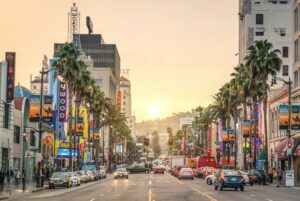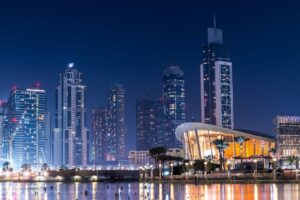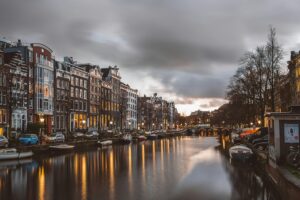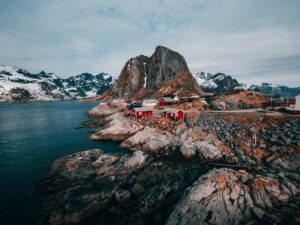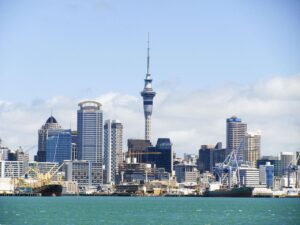Planning a trip to Barcelona? You’re in for an unforgettable experience. This vibrant Mediterranean city seamlessly blends architectural wonders, cultural treasures, and beachside relaxation. Whether you’re a first-time visitor or returning to explore more, knowing the top 10 places to visit in Barcelona will help you make the most of your journey. This comprehensive guide covers everything from iconic landmarks to hidden gems in Barcelona, ensuring you won’t miss any must-see attractions during your 2025 adventure.
Barcelona is more than just a destination; it’s a city that captures your heart. With its unique blend of Gothic quarters, modernist masterpieces, and energetic neighborhoods, there’s something for every traveler. Whether you’re interested in art, architecture, food, or beach relaxation, these top 10 best places to visit in Barcelona will guide your itinerary and help you experience the city like never before.
TL;DR – Quick Links to the Top 10 Places to Visit in Barcelona:
- Sagrada Família (Google Maps)
- Park Güell (Google Maps)
- Gothic Quarter (Google Maps)
- La Rambla (Google Maps)
- Casa Batlló (Google Maps)
- Montjuïc (Google Maps)
- Las Ramblas Market and Local Markets (Google Maps)
- Barcelona Beaches (Google Maps)
- Parc de la Ciutadella (Google Maps)
- Montserrat (Google Maps)
Why Visit Barcelona right now?
Before exploring the top 10 places to see in Barcelona, it’s worth understanding what makes this city so special. Barcelona has consistently ranked as one of Europe’s most visited cities, and for good reason. The city offers an incredible mix of historical landmarks, modern attractions, and authentic local experiences that appeal to diverse travelers.
In 2025, Barcelona will remain a premier travel destination. The city has improved its infrastructure, enhanced visitor experiences, and maintained its commitment to sustainable tourism. The Mediterranean climate means pleasant weather year-round, though spring and fall offer the most comfortable temperatures for exploring. Additionally, Barcelona travel tips from locals emphasize visiting during the shoulder seasons (April-May and September-October) to avoid peak summer crowds while still enjoying excellent weather.
The city boasts over 300 days of sunshine per year, making it an ideal destination regardless of the season. Summer temperatures typically range from 25-30°C (77-86°F), while winter temperatures are mild, averaging 8-15°C (46-59°F). This pleasant climate supports the city’s outdoor-focused culture and makes exploring the top 10 places to visit in Barcelona comfortable throughout the year.
Furthermore, Barcelona’s position on the Mediterranean coast provides easy access to nearby attractions, including wine regions, mountain retreats, and coastal towns. The city serves as an excellent base for exploring Catalonia, making it perfect for travelers who want to combine urban exploration with regional discovery. The combination of urban attractions, natural beauty, and cultural richness makes Barcelona an exceptionally versatile destination.
1. Sagrada Família: Gaudí’s Masterpiece
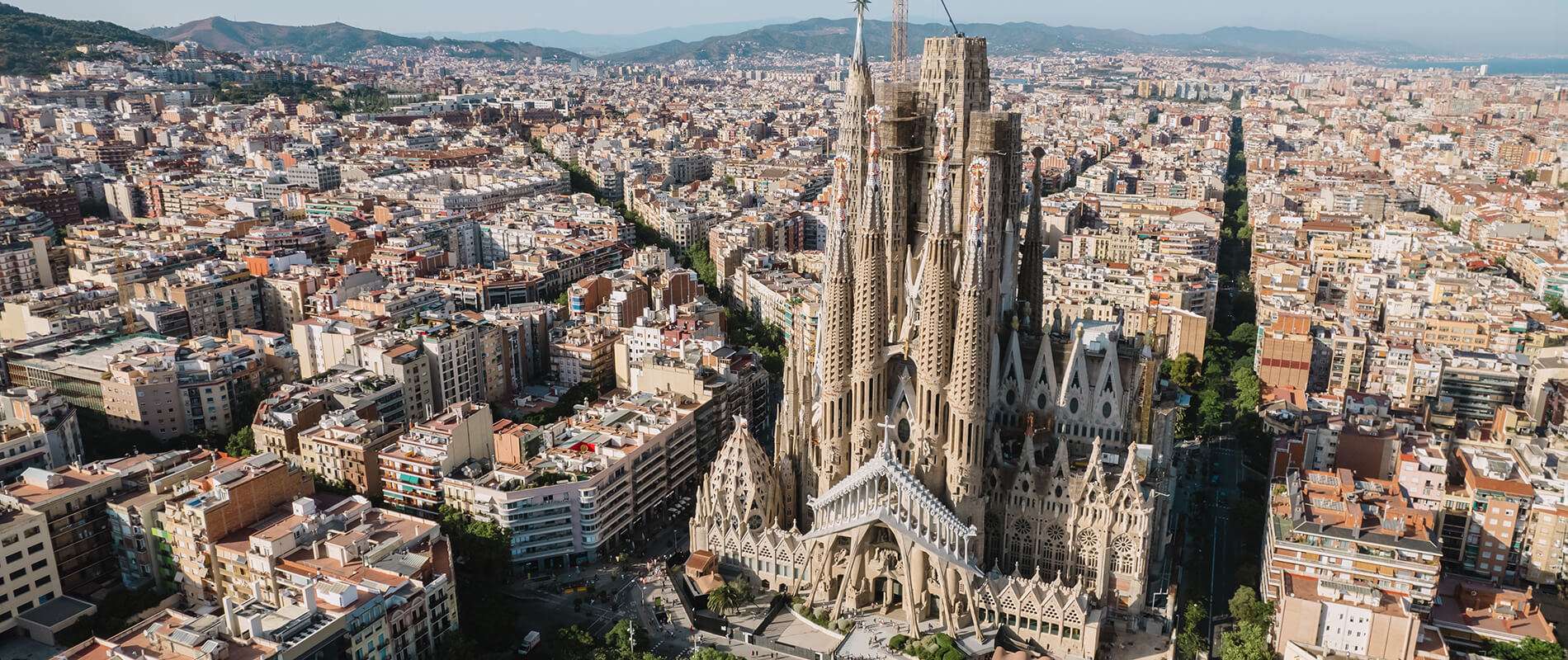
No list of top 10 places to visit in Barcelona would be complete without Gaudí’s most iconic creation, the Sagrada Família. This basilica is not just a building; it’s a living, breathing work of art that has been under construction since 1883. What makes the Sagrada Família so extraordinary is Antoni Gaudí’s vision of creating a temple that represents the entire story of Christianity through its architecture and symbolism. The project began in 1883 as a modest parish church, but Gaudí took over in 1883 and transformed it into the monumental basilica we see today.
The basilica is famous for its stunning facades, each telling a different story and representing different aspects of Christ’s life. The Nativity facade on the northeastern side depicts the birth of Jesus with intricate stone carvings that seem to dance across the surface. The detailed sculpture work shows shepherds, animals, and the nativity scene, all rendered with remarkable detail. The Passion facade on the southwestern side presents a more angular, modern interpretation of Christ’s suffering, featuring stark geometric forms and emaciated figures. Meanwhile, the Glory facade, currently under development, will ultimately be the main entrance and the largest of the three, serving as the primary gateway to the basilica.
Inside, the basilica is equally breathtaking and represents a completely different aesthetic experience. The soaring columns, designed to mimic trees in a forest, create a canopy effect that seems to reach toward heaven. These organic, branching columns represent one of Gaudí’s most innovative structural designs, allowing the basilica to support its weight while creating a sense of weightlessness and spiritual ascension. The use of natural light flooding through the stained glass windows creates an ethereal atmosphere that leaves visitors speechless. The interior design incorporates Gaudí’s signature style, blending nature-inspired elements with bold geometric forms that create a sense of harmony and balance.
The intricate tilework, sculpted details, and symbolic elements throughout the basilica reveal Gaudí’s meticulous attention to spiritual symbolism. Every architectural element serves a purpose, whether it’s creating a particular atmosphere, telling a biblical story, or guiding the viewer’s spiritual journey through the sacred space. The crypt beneath the basilica contains the tomb of Gaudí himself, a testament to his dedication and love for this project that consumed much of his later life.
Visiting the Sagrada Família requires booking, especially during peak season. Once inside, you have the option to climb the towers for panoramic views of Barcelona, though the climb involves many stairs (around 400 steps depending on which tower you choose). The climb through the Nativity or Passion tower takes you through the interior structure, allowing you to appreciate the basilica’s construction methods and engineering innovations. From the tower platforms, you’ll enjoy 360-degree views of Barcelona, from the Montjuïc hills to the Mediterranean Sea and the surrounding cityscape.
The museum located within the basilica provides fascinating insights into Gaudí’s design philosophy, construction techniques, and the symbolic meaning behind various architectural elements. Exhibits display original sketches, scale models, and detailed explanations of Gaudí’s innovative structural solutions. Many visitors find the museum essential for understanding the basilica’s complexity. Plan to spend at least two to three hours here to fully appreciate every detail, and consider visiting multiple times to discover new elements you might have missed on previous visits.
2. Park Güell: Where Fantasy Meets Reality
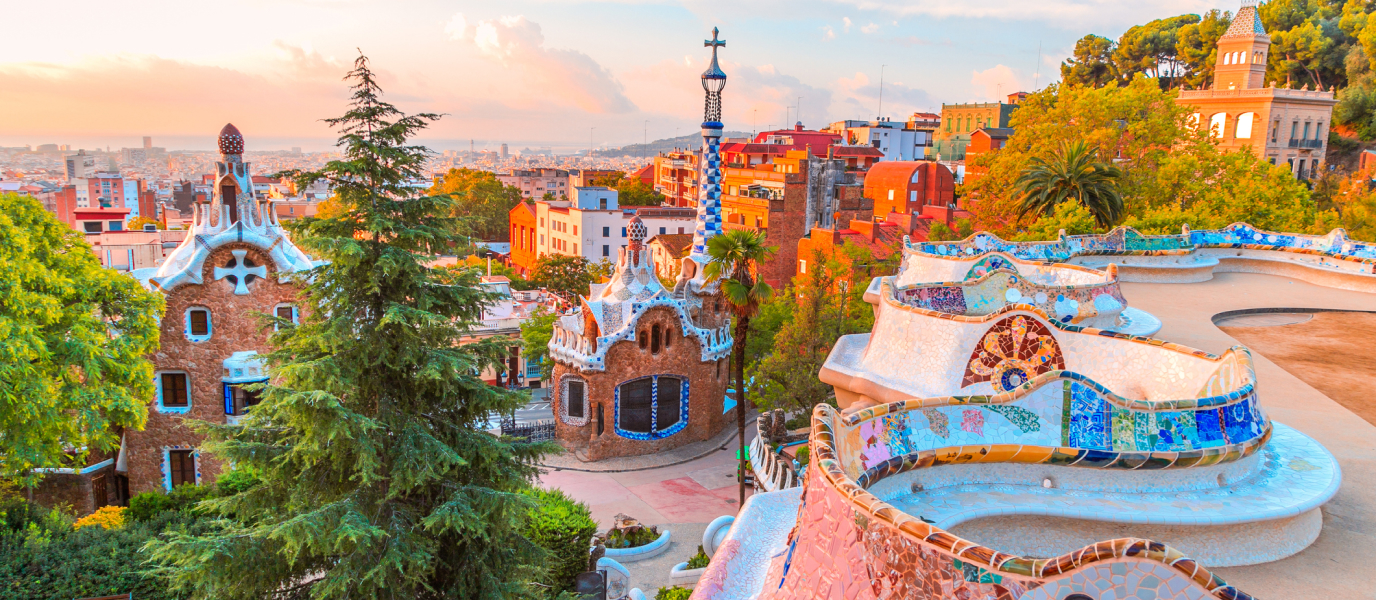
Another top 10 place to visit in Barcelona is Park Güell, a whimsical wonderland created by Antoni Gaudí in the early 1900s. Originally commissioned as a residential community by industrialist Eusebi Güell, this 20-hectare park has become one of Barcelona’s most beloved attractions and a UNESCO World Heritage Site. What began as a failed residential development has transformed into one of the most visited parks in the world, attracting over 3 million visitors annually.
Park Güell is instantly recognizable by its unique architectural style and vibrant mosaics created using broken ceramic tiles, a technique known as trencadís. This artistic method, which Gaudí borrowed and perfected, gives the structures their distinctive, colorful appearance that seems almost fantastical. The tiles, often sourced from factory seconds and discarded materials, are arranged to create elaborate patterns and images. Walking through the park feels like stepping into a fairy tale, with serpentine benches, quirky gatehouse structures, and winding pathways that encourage exploration and discovery.
The park’s most famous element is the Grand Terrace, where a curved bench-border overlooks the city. This iconic 110-meter-long bench undulates like a wave, designed ergonomically to accommodate the human form while providing support and comfort. The bench is entirely covered in trencadís mosaic work, with vibrant blues, greens, and earth tones creating an abstract pattern. This terrace offers spectacular views of Barcelona and the Mediterranean Sea, making it an ideal spot for photography and contemplation. On clear days, visitors can see all the way to the Montserrat mountains in the distance.
Below the terrace lies the Hypostyle Hall, supported by 86 columns that create an impressive cathedral-like space. This area was originally designed as a marketplace for the residential community. The columns, each uniquely decorated with colorful mosaics, create a forest-like atmosphere. The ceiling features skylights that filter natural light through the space, creating an otherworldly environment. This hall demonstrates Gaudí’s mastery of structural engineering combined with artistic vision.
Wandering through the upper sections of Park Güell reveals numerous hidden pathways, natural grottos, and peaceful gardens. Many visitors discover unexpected corners filled with vegetation, stone sculptures, and architectural details that showcase Gaudí’s imaginative genius. The park features native Mediterranean plants, exotic species, and cultivated gardens that create diverse ecological zones throughout the property. For travelers seeking hidden gems in Barcelona, the quieter pathways in the northern sections of the park offer a more serene experience away from the main crowds.
The two gatehouse structures flanking the main entrance are among the most photographed elements of Park Güell. These whimsical buildings, with their mushroom-like shapes and elaborate mosaic decoration, serve as iconic symbols of the park. One building originally housed the administrative office, while the other served as a porter’s lodge. Today, they contain exhibits about the park’s history and Gaudí’s design philosophy.
To experience Park Güell without overwhelming crowds, visit early in the morning (as soon as gates open) or during late afternoon hours (after 4 PM). The park is divided into different zones, with timed entry required for the main monumental area featuring the terrace and hypostyle hall. The upper and lower sections of the park are free to access, providing opportunities to explore Gaudí’s work without purchasing a ticket. Wearing comfortable walking shoes is essential, as the terrain involves considerable climbing and uneven surfaces. Allow at least two hours to properly explore the park and soak in its magical atmosphere, though many visitors spend half a day or longer.
3. Gothic Quarter: Stepping Back in Time
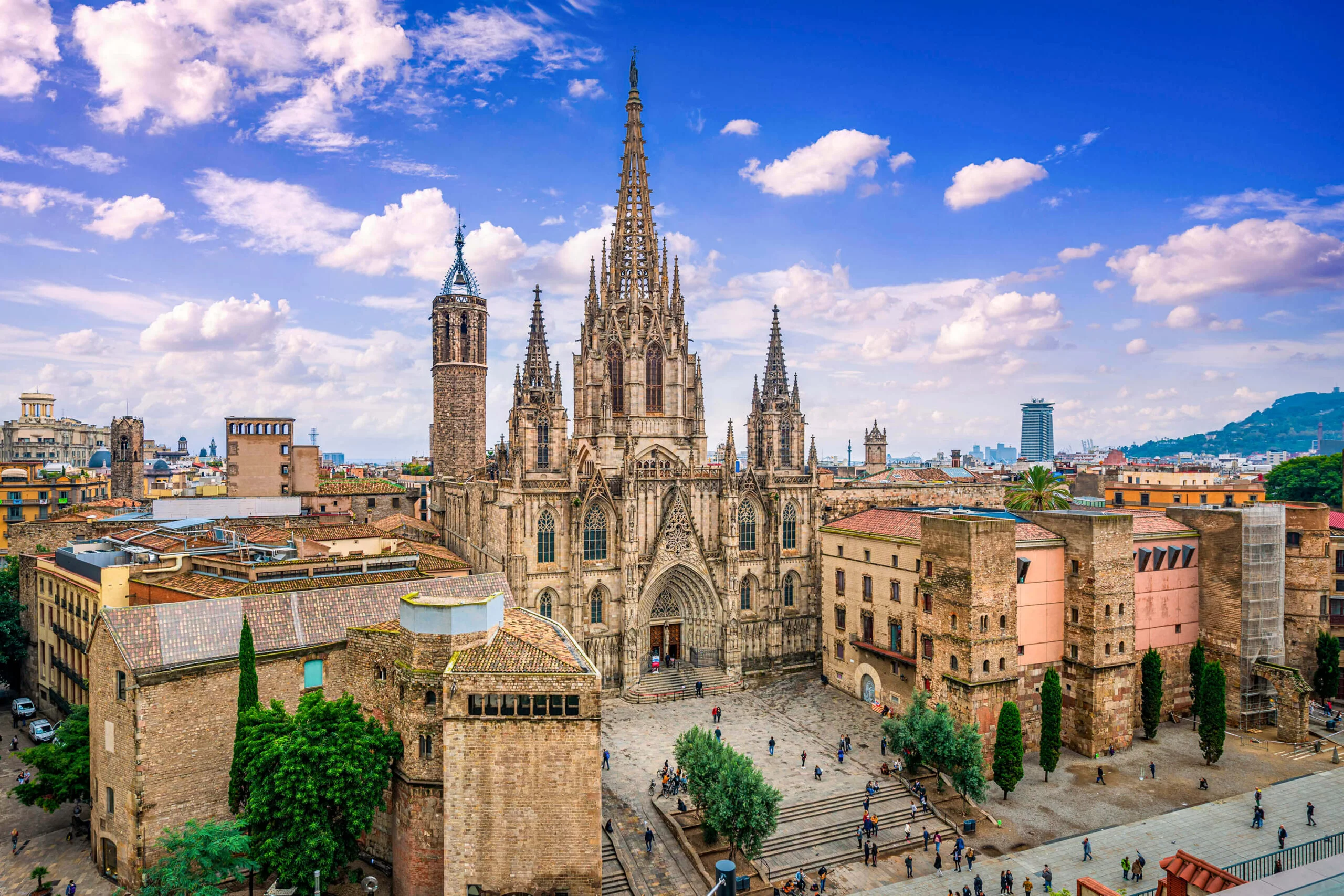
For those interested in history and medieval architecture, the Gothic Quarter (Barri Gòtic) represents one of the top 10 places to see in Barcelona. This ancient neighborhood is the heart of Barcelona’s Old City and dates back to Roman times, with many buildings constructed during the Middle Ages when Barcelona was a thriving Mediterranean port city. The neighborhood preserves centuries of history within its boundaries, making it a living museum of Barcelona’s past.
Walking through the narrow, winding streets of the Gothic Quarter feels like traveling through time. The towering Gothic buildings, dating from the 14th and 15th centuries, create a labyrinthine network of alleyways that reveal hidden plazas, quiet courtyards, and historical landmarks at every turn. The architecture is remarkably well-preserved, offering visitors an authentic glimpse into Barcelona’s medieval past. Many streets are so narrow that sunlight barely penetrates them, creating a medieval ambiance that feels genuine and evocative.
The Barcelona Cathedral (Catedral de la Santa Creu i Santa Eulàlia) stands at the heart of the Gothic Quarter and is one of the finest examples of Catalan Gothic architecture. Built over several centuries starting in 1298 and completed in the 15th century, the cathedral features a stunning façade with intricate stone carvings, flying buttresses, and a magnificent interior. The cathedral’s exterior displays the characteristic features of Gothic architecture pointed arches, ribbed vaults, and elaborate stonework. The cathedral’s interior is equally impressive, with soaring columns, vaulted ceilings, and beautiful stained glass windows that cast colored light throughout the sacred space.
The cathedral’s cloister is particularly beautiful, with landscaped gardens and a small community of white geese that have inhabited the space for centuries. Local legend suggests the geese represent purity and innocence, though their primary purpose was historical pest control. The cloister provides a peaceful sanctuary from the bustling streets outside, featuring Renaissance fountains, Gothic arches, and quiet corners perfect for contemplation. Many visitors find the cloister to be one of Barcelona’s most peaceful spaces.
Beyond the cathedral, the Gothic Quarter houses numerous other historical sites, including the Royal Palace, which served as the residence of Barcelona’s medieval rulers. The palace’s architecture spans different periods, creating a palimpsest of Barcelona’s political history. The Church of Santa Maria del Pi features a Gothic façade and beautiful rose window. The quarter contains countless museums and galleries housed in historic buildings, each revealing different aspects of Barcelona’s rich heritage.
The area is also filled with small independent shops, vintage boutiques, cafes, and restaurants where you can experience authentic Barcelona. Many of these establishments occupy buildings that have stood for centuries, adding to the Quarter’s charm and character. Medieval wine bars serve local wines and traditional tapas in atmospheric settings. Artisan shops sell handmade crafts, jewelry, and local products. The narrow streets echo with history and contemporary life simultaneously.
One of the best Barcelona travel tips is to explore the Gothic Quarter on foot, allowing yourself to get pleasantly lost in the medieval streets. Start early in the morning to beat the crowds and have time to linger at interesting spots. The narrow streets provide natural shade during hot summer months, making the Gothic Quarter particularly pleasant for exploring during warmer seasons. Photography enthusiasts will find endless opportunities to capture the quarter’s atmospheric qualities, from dramatic shadows in narrow alleyways to architectural details that reveal centuries of history.
4. La Rambla: Barcelona’s Most Famous Boulevard
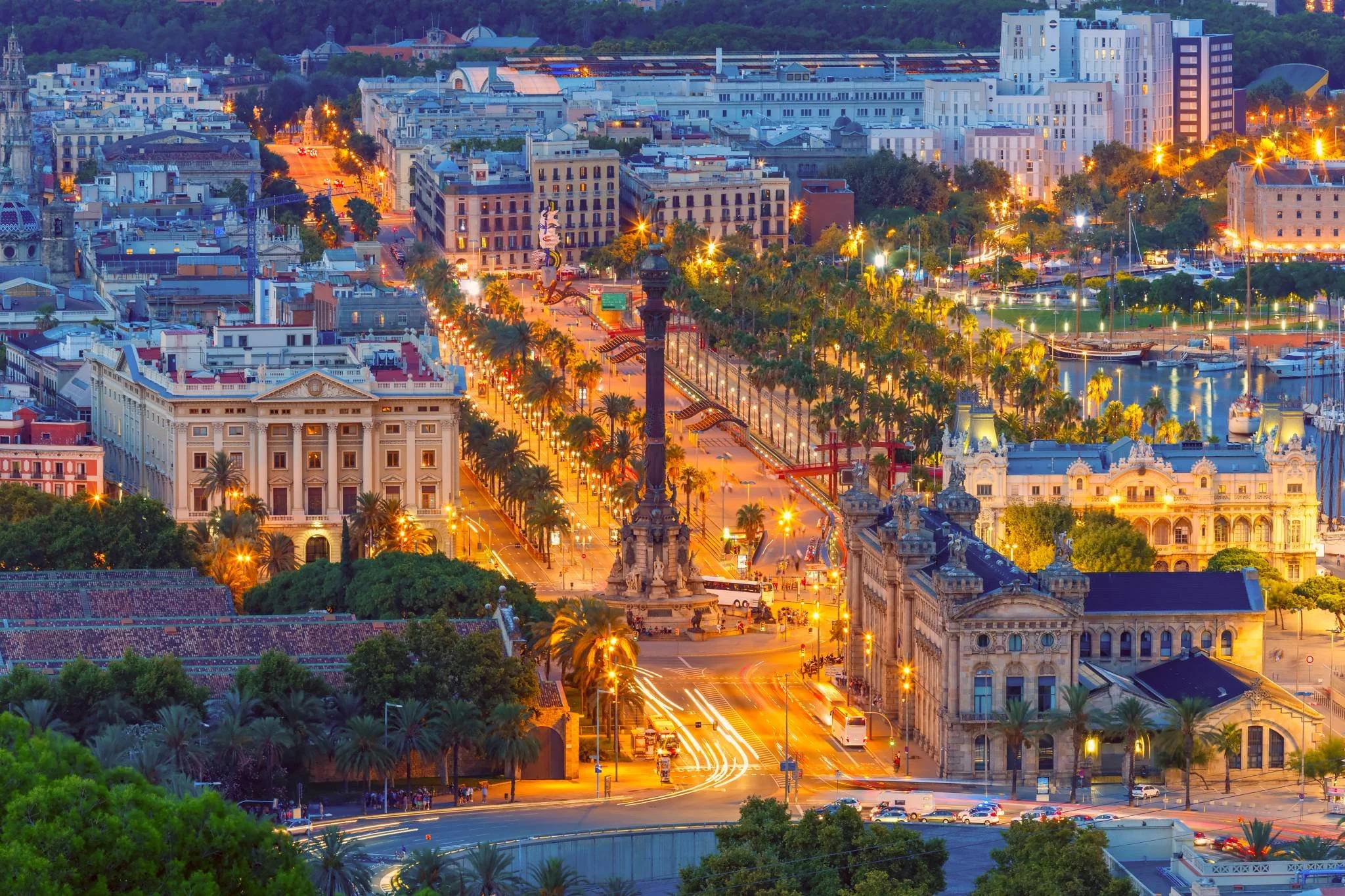
La Rambla is one of the top 10 places to visit in Barcelona and arguably the city’s most famous street. This tree-lined boulevard stretches from Plaça de Catalunya down to the waterfront at the Columbus Monument, covering a distance of about 1.2 kilometers. La Rambla is much more than just a street; it’s a living stage where Barcelona’s culture, energy, and vibrancy come alive. The street has been a central feature of Barcelona’s urban landscape for centuries, evolving from a seasonal riverbed into the vibrant promenade we know today.
The boulevard is divided into five sections, each with its own character and attractions. Starting from Plaça de Catalunya, you’ll find the upper sections lined with shops, cafes, and theaters. The architecture transitions from modern to historic as you descend. As you descend, the street opens up to reveal street performers, artists, and living statues that create an electric atmosphere. The middle sections feature the historic Liceu Opera House, one of Europe’s most prestigious opera venues, and various cultural institutions, including museums and galleries. The lower sections near the waterfront offer views of the harbor and access to the Columbus Monument, which celebrates Christopher Columbus and Barcelona’s maritime heritage.
What makes La Rambla truly special is the constant movement and energy. Street performers dressed as famous characters or painted in metallic colors pose for photos, musicians play classical instruments and contemporary hits, and artists create live paintings. While these performances can be touristy, they also represent a unique Barcelona tradition that has existed for decades. The human statues, in particular, are remarkably lifelike and create amusing moments when they suddenly move in response to a coin or a camera click. The creativity and dedication of these performers make La Rambla an outdoor theater of sorts.
The Columbus Monument stands at the southern terminus of La Rambla, marking Barcelona’s importance as a Mediterranean port and honoring the historical connection between Barcelona and the Age of Exploration. An elevator within the monument takes visitors to the top, providing panoramic views of the harbor, city, and surrounding areas. The monument itself is a striking 60-meter-tall column topped with a statue of Columbus pointing toward the sea.
La Rambla serves as a gateway to exploring other attractions and neighborhoods. The surrounding areas house the Maritime Museum, housed in the Gothic Royal Shipyard where medieval galleys were constructed, the National Theater of Catalonia, and numerous museums dedicated to art, history, and culture. The Wax Museum features figures of celebrities and historical figures. The street itself is a sensory experience, with the mingling of sounds, sights, and the aroma of snacks from various food vendors.
The waterfront area beyond La Rambla features the Port Vell, a redeveloped harbor area with shops, restaurants, and attractions, including the Barcelona Aquarium. The area has been transformed into a modern recreational zone while preserving its historical maritime character. Boat tours departing from the harbor provide water-based perspectives of the city and coastline.
A key Barcelona travel tip for La Rambla is to be aware of pickpockets, particularly in crowded areas. While the street is generally safe, the throngs of tourists create opportunities for theft. Keep valuables secure and maintain awareness of your surroundings. The best time to visit La Rambla is early morning when it’s less crowded, or evening when the street takes on a different character with excellent lighting for photography. Consider visiting multiple times to experience La Rambla at different times of day and seasons, as it transforms throughout the year.
5. Casa Batlló: Modernist Architecture at Its Finest
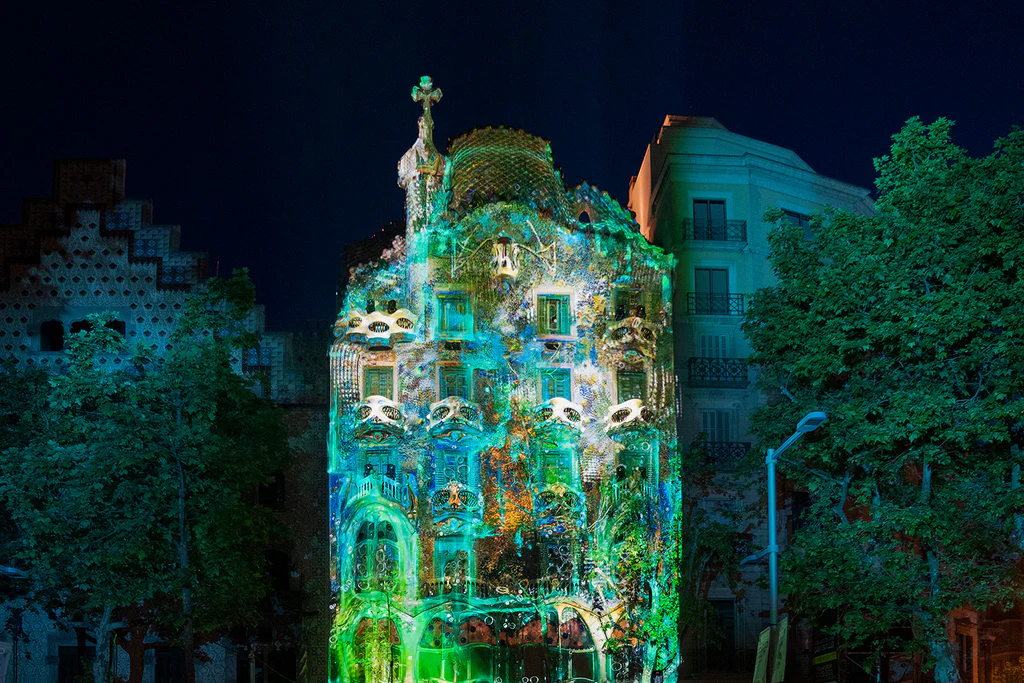
If you’re exploring what to do in Barcelona and have a passion for architecture, Casa Batlló is an absolute must-see. This stunning residential building, also designed by Antoni Gaudí, represents the pinnacle of Catalan Modernism and is a UNESCO World Heritage Site. Located on the prestigious Passeig de Gràcia, it stands alongside other architectural masterpieces and forms part of what’s known as the Block of Discord, where contrasting architectural styles create a fascinating urban composition.
Built in 1877 and radically transformed by Gaudí between 1904 and 1906, Casa Batlló stands out dramatically from its neighboring buildings on Passeig de Gràcia. The façade appears almost organic, with curved walls, colorful ceramic tiles in varying shades, and sculptural elements that resemble sea creatures, dragon scales, or skeletal forms. The building’s appearance has led many to refer to it as the “House of the Dragon” or the “House of Bones” due to its skeletal, otherworldly appearance. The transformation was a radical reimagining of an existing building, demonstrating Gaudí’s ability to completely transform conventional structures into artistic statements.
The building’s exterior is just the beginning of understanding Casa Batlló. The interior is equally remarkable, featuring a flowing, undulating layout that abandons traditional right angles in favor of curves and organic shapes. The main living spaces feature ceilings with decorative moldings that seem to flow like water, stained glass windows that filter light in stunning ways, and walls that curve and undulate. Every room is designed with meticulous attention to detail, from the custom-designed furniture to the innovative plumbing fixtures that were cutting-edge for their time. The interior represents a complete departure from conventional residential design, creating spaces that feel alive and organic.
Casa Batlló is divided into different levels, each revealing new architectural wonders. The main floor served as Gaudí’s client’s residence and features the most elaborate spaces, including a stunning main living room with panoramic views of Passeig de Gràcia. This floor showcases the height of Gaudí’s design sophistication, with intricate details in every corner. The upper floors house additional residential apartments, each reflecting Gaudí’s design philosophy while serving practical residential purposes. The spaces maximize natural light through innovative window placements and use color strategically to create specific moods in different rooms.
The roof terrace is a masterpiece in itself, featuring sculptural chimneys and ventilation structures that have become iconic symbols of Barcelona. These fantastical structures, covered in colorful mosaics and featuring surreal forms, create an instantly recognizable skyline. The roof garden originally featured a small pool and provided a retreat for the residents. Today, visitors can access the roof and appreciate these sculptural elements while enjoying views across Barcelona.
Visitors can experience Casa Batlló through guided tours or by exploring independently with provided audio guides. The museum experience includes augmented reality features that help visitors visualize the building’s history, original design intent, and the vision Gaudí had for the space. Detailed information panels explain the symbolism and innovative techniques used throughout the building. Many guests spend two to three hours marveling at the architectural details and learning about Gaudí’s innovative design philosophy. Photography is permitted, and Casa Batlló provides numerous photo opportunities throughout the building.
6. Montjuïc: Cultural Hub and Adventure Playground
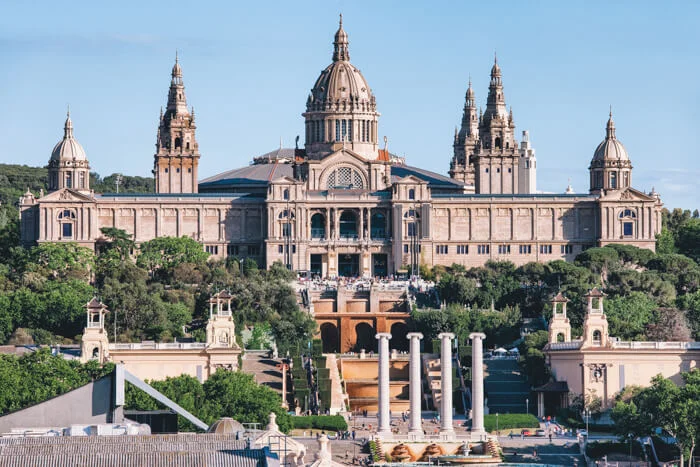
Montjuïc is a hill located on the southwestern side of Barcelona that ranks high among the top 10 best places to visit in Barcelona for those seeking natural beauty combined with cultural attractions. This expansive area encompasses over 60 hectares and serves as a cultural and recreational powerhouse. The hill was originally fortified in the 17th century, and these medieval fortress foundations still exist beneath the modern attractions. Over time, Montjuïc has evolved into a premier destination combining museums, parks, entertainment venues, and recreational facilities.
The hill is home to numerous museums and cultural institutions, including the National Art Museum of Catalonia (MNAC), which houses one of the world’s finest collections of Romanesque art. The museum building itself is architecturally significant, featuring a striking domed structure visible from various points throughout the city. The palace that houses MNAC was built for the 1929 International Exposition and represents an excellent example of early 20th-century architectural ambitions. The museum features approximately 16,000 artworks spanning from the 11th to the 20th centuries, with particular strength in Romanesque and Catalan modernist works.
Other notable museums on Montjuïc include the Fundació Joan Miró, dedicated entirely to the works of the surrealist master, containing the world’s most extensive collection of his paintings, sculptures, and drawings. The museum’s modern architecture complements the artwork while providing natural light and views of the Mediterranean. The Museum of Archaeology of Catalonia (MAC) showcases artifacts from the region’s ancient past, including Greek, Roman, and prehistoric collections. The Design Museum explores the history and contemporary practice of design. The Museu d’Art Moderni focuses on Catalan and Spanish modern art.
Beyond the museums, Montjuïc offers beautiful gardens and outdoor spaces perfect for relaxation and nature walks. The Jardins de Mossèn Costa i Llobera features exotic plants and cacti from around the world, creating a botanical wonderland with species-specific microclimates. This garden is particularly stunning during spring and early summer when flowering plants are in bloom. The Jardins de la Vallée provides terraced gardens with fountains, walkways, and sweeping views of the city and the Mediterranean Sea. These gardens were designed for the 1929 exposition and represent an excellent example of landscape design principles.
The Jardins de la Tamarita offers shaded pathways through lush vegetation, making it an ideal spot to escape the summer heat. This garden features peaceful seating areas, walking trails, and opportunities to observe local wildlife. The Jardins de la Grec features dramatic sculptures and architectural elements integrated into the natural landscape. Each garden has its own character and charm, making Montjuïc a paradise for nature lovers and photographers.
One of the most visited attractions on Montjuïc is the Magic Fountain (Font Màgica), a spectacular fountain show featuring synchronized water jets, lighting, and music. The fountain operates several times per week (typically more frequently during summer months, with reduced schedules during winter). The evening shows create a magical atmosphere, particularly after dark when the lighting effects become more dramatic. Watching the fountain dance to classical music, contemporary hits, and traditional Spanish songs is an unforgettable experience. The fountain complex seats over 3,000 people, and arriving early ensures good viewing positions.
Montjuïc is also home to the Olympic Stadium and other facilities from the 1992 Summer Olympics that transformed the hill and put Barcelona on the world map as a modern city. The stadium, designed by Japanese architect Arata Isozaki, remains an impressive structure and occasionally hosts sporting events and concerts. The surrounding Olympic complex includes museums, sports facilities, and recreational areas. The hill’s strategic location provides panoramic views of Barcelona, the harbor, and the surrounding region. A cable car ride up the hill offers spectacular vistas and serves as a unique way to reach the top, providing bird’s-eye perspectives of the city and coast.
To experience Montjuïc fully, consider spending a full day here. Start with a morning visit to one of the museums, enjoy lunch at a café overlooking the city, explore the gardens during the afternoon, and end your day watching the Magic Fountain at night. This Barcelona travel tips approach ensures you experience the breadth of what Montjuïc has to offer while avoiding exhaustion.
7. Las Ramblas Market and Local Markets: Where Barcelona Shops
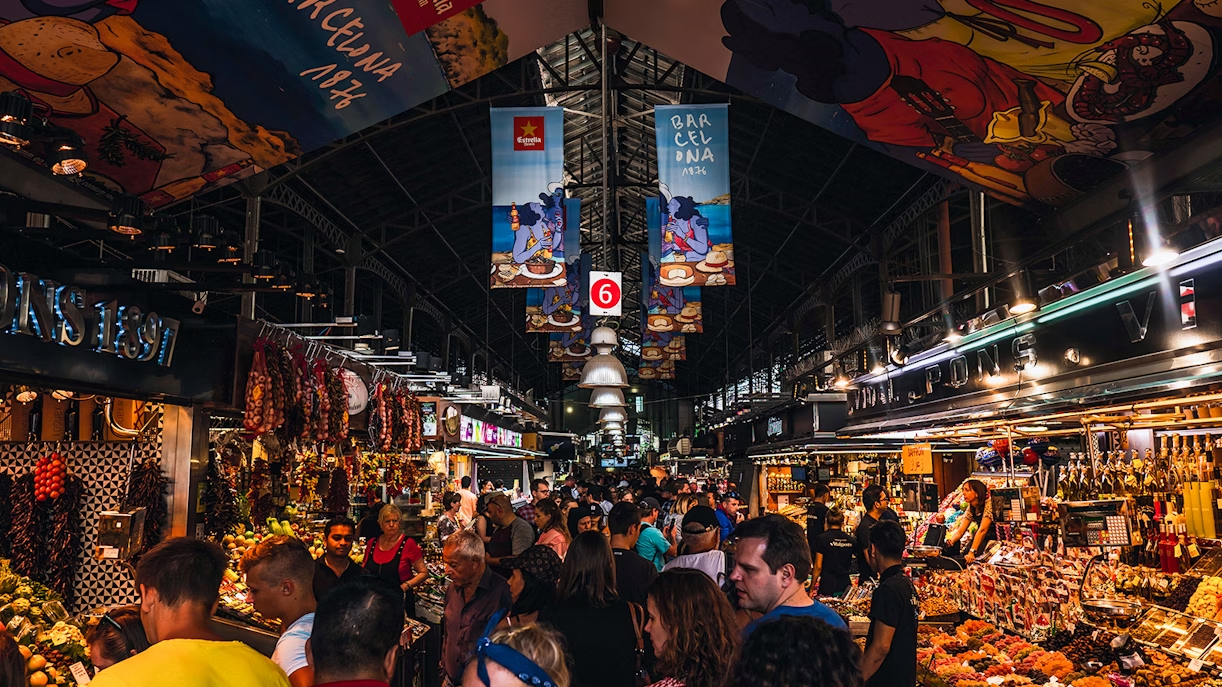
Among the top 10 places to visit in Barcelona, the city’s markets deserve special mention as they provide authentic experiences and insights into local life. While La Rambla itself has a famous market section, Barcelona hosts numerous other markets throughout the city that offer hidden gems in Barcelona beyond typical tourist attractions. Markets represent the beating heart of Barcelona’s food culture and community life.
La Boqueria Market (Mercat de la Boqueria) is the most famous food market in Barcelona, located on La Rambla itself. This vibrant market has been operating since the 13th century and remains a vital part of Barcelona’s food culture. Walking through La Boqueria is a sensory feast; the colors of fresh produce, the aromas of seafood and spices, and the sounds of vendors calling out their goods create an intoxicating atmosphere. The market operates year-round, changing its offerings seasonally to reflect what’s fresh and available.
The market is divided into sections, with fresh fruits and vegetables occupying one area, fresh seafood another, and processed meats and cheeses in dedicated sections. The market’s juice bar is particularly popular, offering fresh tropical fruit juices and smoothies at reasonable prices. These fresh juices, often featuring combinations of oranges, watermelon, mango, and other fruits, are an affordable way to experience Barcelona’s culinary traditions. Visitors can purchase ready-to-eat items like bocadillos (sandwiches), tapas, or seafood dishes and eat while standing at counters throughout the market.
The seafood section is particularly impressive, featuring vendors selling fresh fish, lobsters, crabs, and other marine delicacies. Many stalls offer prepared seafood that can be consumed immediately. The fruit and vegetable sections showcase seasonal produce at peak freshness, with vendors often offering samples to entice customers. The market provides opportunities to taste Spanish delicacies like jamón ibérico (Iberian ham), Spanish cheeses, and local specialties. Many professional chefs shop at La Boqueria, ensuring the quality of merchandise remains consistently high.
Beyond La Boqueria, Barcelona features numerous other markets that provide authentic local shopping experiences. The Mercat de Sant Antoni is a 19th-century market building that sells fresh produce, meats, cheeses, and flowers, along with vintage clothing and antiques on weekends. This market is less touristy than La Boqueria and offers a genuine glimpse into how locals shop. The neighborhood surrounding the market has experienced significant gentrification and now offers excellent restaurants, bars, and boutique shops, making it an interesting area for exploration.
The Mercat de la Virreina specializes in fresh produce and flowers, while the Mercat de la Paz focuses on meat and seafood. These neighborhood markets serve as gathering places for locals and provide excellent opportunities to purchase ingredients for cooking or try fresh local products. The Mercat de la Llibertat features organic and specialty foods. The Mercat de les Flors, despite its name (which translates to “flower market”), actually features prepared foods, fresh juices, and specialty items.
Shopping in Barcelona’s markets is a cultural experience that extends beyond commerce. These spaces represent the city’s connection to tradition, quality, and community. Many top 10 places to see in Barcelona guides overlook these markets, but they’re essential for understanding Barcelona’s authentic character and what to do in Barcelona like a true local. Visiting markets provides insights into Spanish eating habits, seasonal availability, and the importance of fresh, local ingredients in traditional Catalan cuisine.
8. Barcelona Beaches: Sand, Sea, and Mediterranean Bliss
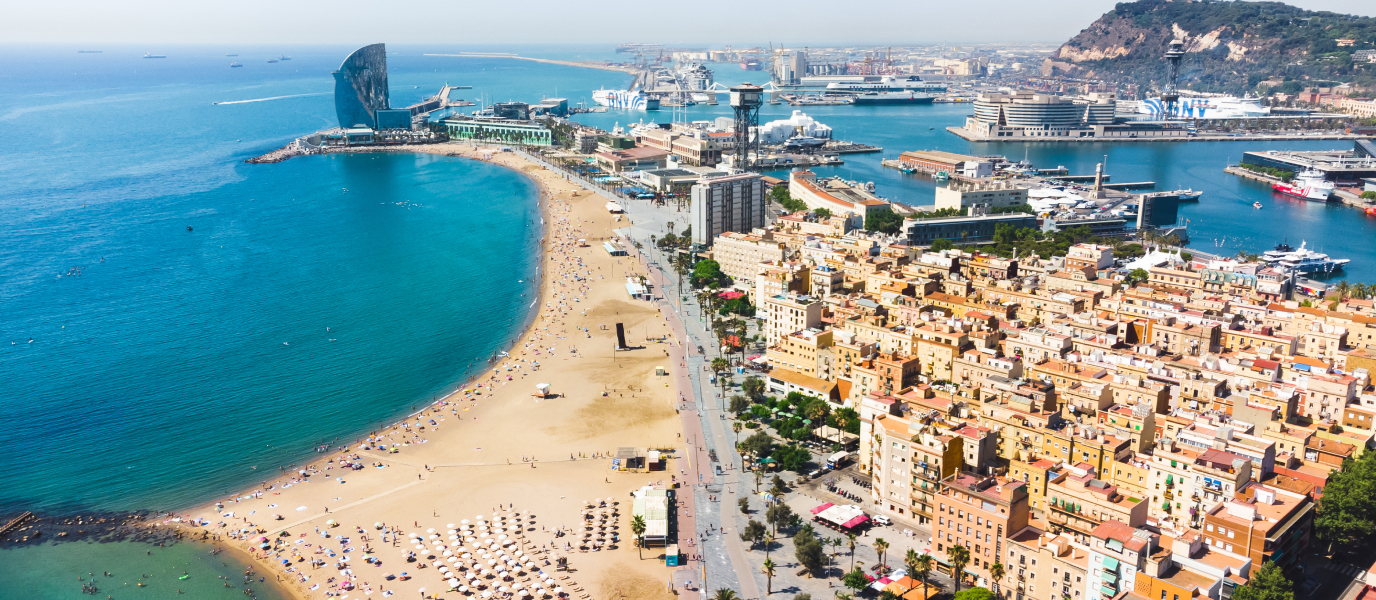
What to do in Barcelona isn’t complete without experiencing the city’s beautiful Mediterranean beaches. The top 10 places to visit in Barcelona include several stunning beach areas that offer relaxation, water sports, and vibrant beach culture. Barcelona’s beaches extend for several kilometers along the coast, providing diverse environments for different preferences and activities.
Barceloneta Beach is the most famous and easily accessible beach, located just beyond La Rambla and the Columbus Monument. This long stretch of sandy shore has been a gathering place for locals and visitors since the 18th century. The beach features a promenade lined with restaurants, bars, and shops, making it perfect for those who want to enjoy the sea without straying far from urban amenities. The beach’s history is intertwined with Barcelona’s maritime traditions and working-class neighborhoods.
Barceloneta Beach is known for its vibrant atmosphere, particularly during the summer months when sun-seekers, volleyball players, and swimmers fill the sand. The beach is well-maintained with facilities including showers, changing rooms, and lifeguards. The surrounding neighborhood of Barceloneta has been extensively renovated and now offers an excellent selection of restaurants specializing in fresh seafood and traditional Catalan cuisine. The neighborhood’s narrow streets, charming plazas, and seafaring history make it worth exploring beyond the beach itself.
The beach promenade features excellent restaurants ranging from casual beachside chiringuitos (beach bars) to upscale establishments with Michelin stars. Many restaurants offer outdoor seating with direct beach views, creating the perfect setting for dining while watching the sunset. Local specialties like paella, seafood fideuà (similar to paella but made with short noodles), and fresh grilled fish are particularly popular.
For those seeking hidden gems in Barcelona away from the main beach crowds, the Mar Bella Beach and Bogatell Beach, located further north along the coast, offer similar facilities and sandy shores with a less touristy atmosphere. These beaches are easily accessible by metro and provide a more relaxed beach experience. Mar Bella is known for its gay-friendly culture and younger demographic. Bogatell offers a quieter alternative with similar amenities and services.
The Icaria Beach is another excellent option, featuring a beautiful promenade with water sports facilities and beachfront restaurants. This beach is particularly popular with families and offers a good balance between accessibility and a more local feel compared to Barceloneta Beach. The promenade features small parks and play areas for children. Water sports facilities provide opportunities for windsurfing, paddleboarding, and other activities.
Barcelona beaches provide opportunities for various water activities, including swimming, paddleboarding, kayaking, and windsurfing. Several beach clubs offer loungers, umbrellas, and food service, making it easy to spend an entire day by the sea. Many beaches have experienced recent improvements in water quality and facilities, making them excellent destinations for summer exploration. Beach volleyball courts, badminton areas, and other recreational facilities are available at various beaches.
A top Barcelona travel tips recommendation is to arrive at the beach early to secure a good spot, particularly during summer weekends. The beaches are best experienced in the morning when they’re less crowded, or in the early evening when the sun creates golden light for photography. The water is generally warmest from July to September, though swimming is possible year-round. Water temperature ranges from approximately 13°C (55°F) in winter to 25°C (77°F) in summer.
9. Parc de la Ciutadella: Green Spaces and Cultural Treasures
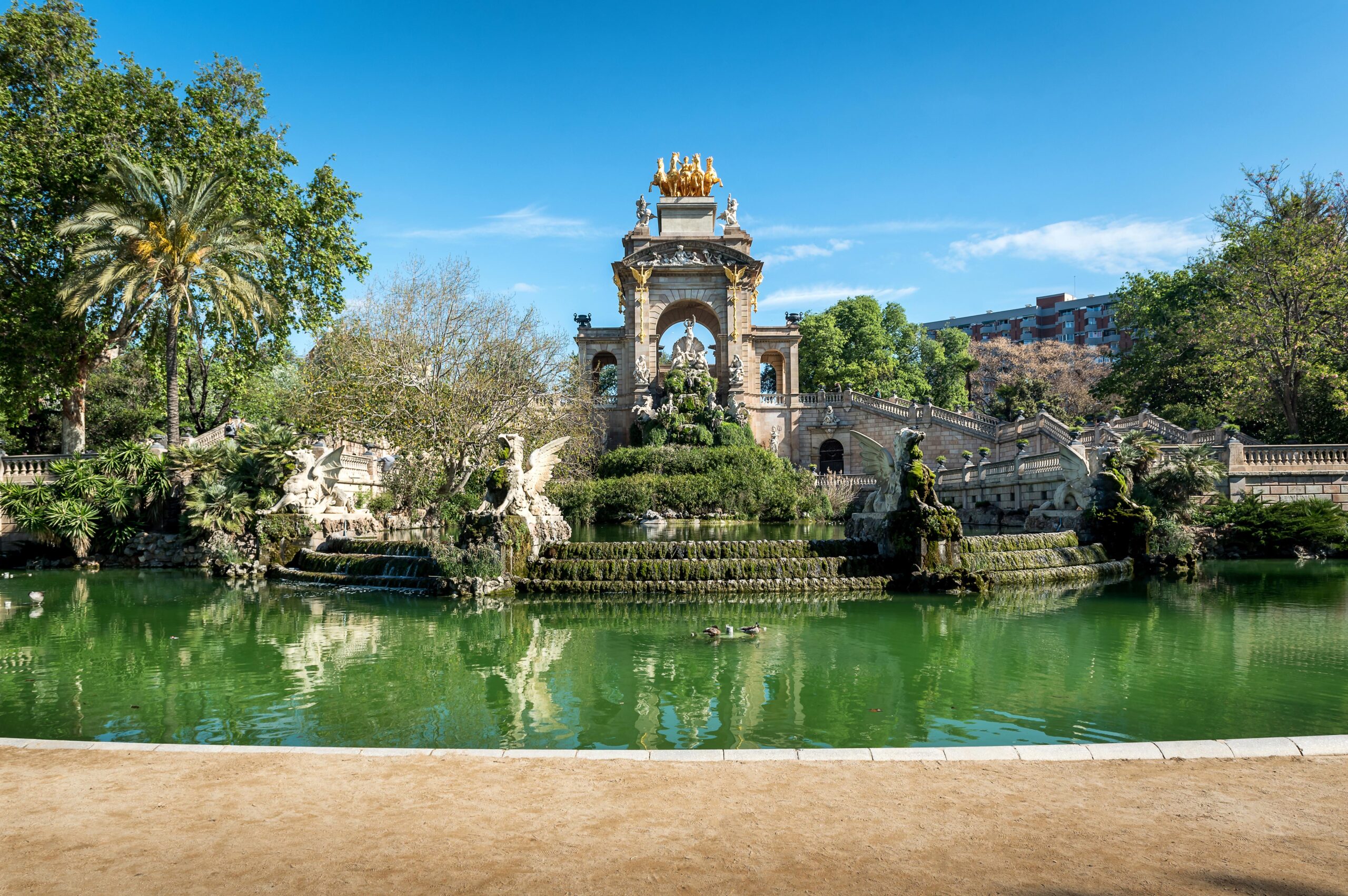
Parc de la Ciutadella represents one of the top 10 best places to visit in Barcelona for those seeking natural beauty combined with cultural attractions. This sprawling park encompasses 30 hectares and serves as Barcelona’s most important central park. The park is easily accessible from the Gothic Quarter and La Rambla, making it convenient for inclusion in any Barcelona itinerary.
The park’s history is fascinating. It was built on the grounds of a fortress (cittadella) that was demolished in 1868 after a popular uprising. The land was then redesigned by landscape architects and converted into a public park, making it accessible to all Barcelona residents. This transformation from military installation to democratic public space represented a significant moment in Barcelona’s urban development. Today, the park features beautiful walking paths, tranquil ponds, impressive sculptures, and significant cultural institutions.
One of the park’s main attractions is the Museu de Zoologia (Museum of Zoology), housed in a distinctive fortress-like building constructed for the 1888 World Exposition. The museum features an impressive collection of animal specimens and interactive exhibits that appeal to both children and adults. Exhibits cover topics including animal classification, evolution, and biodiversity. The museum is particularly popular with families and provides educational opportunities for learning about the natural world.
Another building from the same era houses the Museu de Geologia (Museum of Geology), presenting the history of Earth and various geological formations. The museum features mineral specimens, fossil collections, and interactive displays explaining geological processes. The museum helps visitors understand the Earth’s dynamic nature and the forces that shape our planet.
The park’s most iconic structure is the Cascada Monumental (Monumental Waterfall), a dramatic artificial waterfall designed by Josep Fontserè with sculptural elements by Antoni Gaudí. This impressive fountain cascade descends from a height of 20 meters and creates a spectacular visual display, particularly when illuminated at night or when water levels are high. The surrounding terrace provides an ideal vantage point for viewing and photographing the fountain. The fountain’s architecture combines neoclassical elements with Gaudí’s organic design sensibilities.
The park also houses the Museu d’Art Moderni (Museum of Modern Art), featuring works by Catalan and international artists from the 19th and 20th centuries. The museum is housed in a beautiful building and provides excellent context for understanding Barcelona’s contribution to modern art. The collection includes paintings, sculptures, photographs, and decorative arts that trace the development of modern art movements.
Beyond the formal structures, Parc de la Ciutadella offers simple pleasures that make it one of the top 10 places to see in Barcelona. The park features beautiful gardens with palm trees, exotic plants, and native vegetation. Multiple ponds create peaceful settings for contemplation, and visitors often see locals jogging, cycling, or simply relaxing on the grass. The park is an excellent place to experience Barcelona as locals do, away from the crowds of major tourist attractions. During the summer months, the park hosts outdoor concerts, theater performances, and other cultural events.
A Barcelona travel tips gem is to bring a picnic and spend an afternoon in the park, observing the local culture and enjoying the natural beauty. Local bakeries and markets near the park provide excellent ingredients for assembling a picnic feast. The park’s multiple entrances and interconnected pathways allow for different route combinations, making it possible to explore different sections during multiple visits. The park is free to access and open year-round, making it accessible to all budget travelers.
10. Montserrat: Spiritual Mountain and Natural Wonder
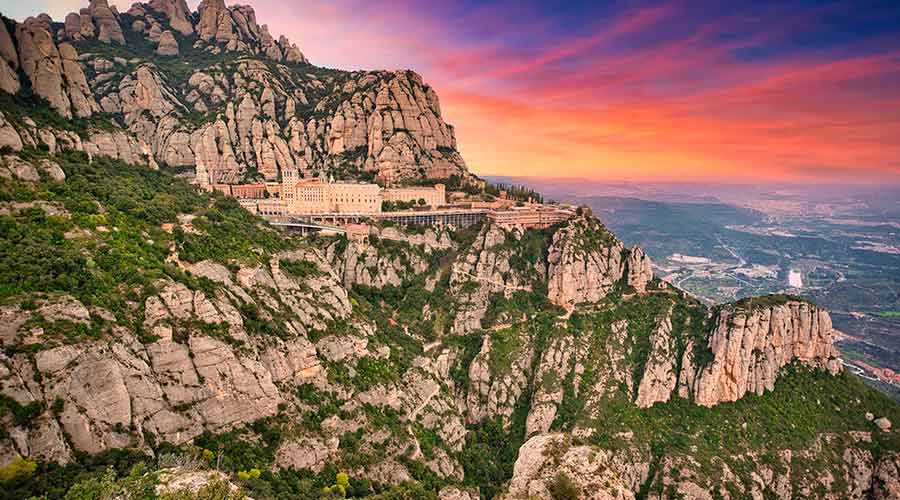
Completing our top 10 places to visit in Barcelona is Montserrat, a dramatic mountain monastery located about 40 kilometers northwest of the city. While technically outside Barcelona proper, Montserrat is easily accessible by train and represents one of the most significant cultural and spiritual destinations in Catalonia. Many Barcelona visitors include Montserrat in their itineraries, making it an essential destination for comprehensive exploration.
Montserrat is home to a Benedictine monastery that has occupied the mountain since the 11th century. The monastery was significantly damaged during various conflicts throughout history, including the Spanish Civil War, but has been restored and remains an important pilgrimage destination for Catholics and spiritual seekers from around the world. The spiritual significance of Montserrat combines with its stunning natural setting to create a profound experience that transcends typical tourism.
The monastery’s spiritual importance centers on the venerated Black Madonna (La Moreneta), a wooden statue dating to the 12th century that attracts pilgrims from across Europe and beyond. According to tradition, the statue was hidden in the mountain to protect it from Moorish invasions, then rediscovered in a cave. The statue now resides in the basilica, and visitors can observe it during services or at designated times. Many pilgrims touch the statue’s hand in devotion, a tradition that has polished portions of the wood smooth over centuries.
The mountain itself is extraordinary, towering rock formations rise dramatically from the surrounding landscape, creating a landscape that seems almost otherworldly. The distinctive, rounded, stacked appearance of the rocks has made Montserrat instantly recognizable and has inspired artists and spiritual seekers for centuries. The name “Montserrat” literally means “jagged mountain” in Catalan, perfectly describing the terrain. The geological formations create numerous peaks and valleys, with some rocks reaching heights of over 1,200 meters.
Visitors to Montserrat can experience multiple attractions and activities. The monastery itself is open for visitors who wish to attend services or explore the basilica. The basilica features a remarkable interior with a vaulted ceiling and the Black Madonna as the focal point. During mass times, visitors can hear the renowned Escolania (choir school), famous for its angelic voices and centuries-old musical traditions. The monastery also features a museum with art and religious artifacts, including works by El Greco, Dalí, and Picasso. A small shop sells traditional crafts, religious items, and publications about Montserrat’s history and spirituality. Restaurants serve traditional Catalan cuisine, allowing visitors to experience local flavors in this spiritual setting.
For those interested in what to do in Barcelona and its surrounding areas, hiking through the Montserrat landscape is highly recommended. The mountain features numerous trails of varying difficulty levels, ranging from easy walks to challenging climbs that require technical skills. These trails wind through stunning scenery and often lead to small hermitages perched on the mountainside. Some of these hermitages date back centuries and were inhabited by monks seeking solitude and spiritual contemplation. The views from various vantage points throughout the mountain provide breathtaking perspectives of the surrounding landscape, including the Catalonian plains and distant Mediterranean views on clear days.
The cable car system offers an alternative way to explore the mountain, providing access to different areas and eliminating the need for extensive hiking. The cable car rides themselves offer thrilling experiences as they soar across the dramatic landscape. Combined with hiking, the cable cars allow visitors to cover more ground and experience different perspectives of the mountain. The cable car stations at different elevations provide access to various hiking trails and viewpoints.
One of the most popular hikes leads to the Sant Jeroni peak, the highest point on the mountain, offering panoramic views across Catalonia. Another popular trail leads to the Cova Santa (Holy Cave), believed to be where the Black Madonna was found. These hikes require varying levels of fitness and technical ability, but guided tours are available for those wanting expert guidance and historical context.
Montserrat can easily be visited as a day trip from Barcelona. Regular trains depart from Barcelona’s Plaça d’Espanya, with the journey taking approximately one hour. The train journey itself is scenic, passing through the Catalonian countryside before arriving at the mountain. This makes Montserrat an ideal hidden gem in Barcelona’s greater region, offering spiritual, cultural, and natural experiences that complement the urban attractions of the city itself. The combination of spiritual significance, natural beauty, and outdoor recreation makes Montserrat an exceptional destination.
Barcelona Travel Tips for an Unforgettable Visit
Now that you’re familiar with the top 10 places to visit in Barcelona, consider these Barcelona travel tips to enhance your experience and make the most of your time in this remarkable city.
Transportation and Getting Around: Barcelona’s public transportation system is excellent, featuring metro, buses, and trams that efficiently connect different parts of the city. The metro system is particularly efficient, with 11 lines covering most of the city. Purchase a T-Mobilitat card or multi-day pass to save money on transportation costs. A T-10 pass provides 10 journeys on the metro and buses at a discounted rate. Multi-day passes offering unlimited travel are available for 2, 3, 4, or 5 days. Renting a bicycle is another popular option, as Barcelona features numerous bike lanes throughout the city, and many bike rental shops offer hourly, daily, or weekly rates. The city’s flat terrain and generally safe cycling infrastructure make it suitable for cycling exploration.
Language and Communication: While English is increasingly spoken in touristy areas and hotels, learning basic Catalan or Spanish phrases will enhance your interactions with locals and earn appreciation for your efforts. Catalan, the local language, is used on signs and in many establishments. Spanish is also widely understood. Useful phrases include “Hola” (hello), “Gracias” (thank you), “Por favor” (please), and “¿Cuánto cuesta?” (how much?). Many locals appreciate visitors’ attempts to speak their language, even if English prevails in tourist areas.
Dining and Food Experiences: Barcelona’s culinary scene is world-class, ranging from Michelin-starred restaurants to humble tapas bars. For authentic local experiences, seek out neighborhood restaurants away from the main tourist streets. The tradition of tapas, small plates shared among friends, is an excellent way to sample multiple dishes affordably. Don’t miss traditional Catalan specialties like escalivada (roasted vegetables), pan con tomate (bread with tomato and olive oil), and crema Catalana (Catalan custard cream). Many restaurants offer menu del día (daily menus) during lunch hours, providing excellent value with typically three courses and a drink for reasonable prices. The Mediterranean diet emphasizes fresh ingredients, olive oil, and seafood, core elements of Catalan cuisine.
Budget Considerations and Money Saving: Barcelona can be enjoyed at various budget levels. Accommodation options range from luxury hotels to budget hostels and apartments. Many museums offer free entrance hours during specific times, usually evenings on certain weekdays. The Barcelona City Pass provides discounts on attractions and public transportation. Purchasing groceries from markets and preparing some meals in your accommodation can help stretch your budget. Many of Barcelona’s attractions, including parks and beaches, are free to enjoy.
Walking Routes and Self-Guided Tours: Create your own Barcelona tours by connecting the top 10 places to see in Barcelona through strategic walking routes. Walking allows you to discover charming side streets, neighborhood shops, and local eateries that might be missed when using public transportation. Walking also provides opportunities for spontaneous discoveries and interactions with locals. A popular route connects La Rambla to the Gothic Quarter to the Waterfront. Another route links Passeig de Gràcia (featuring Casa Batlló and La Pedrera) to the northern neighborhoods.
Timing Your Visit and Best Seasons: Barcelona experiences peak tourism during the summer months (June-August) and holidays. Visit during spring (April-May) or autumn (September-October) for pleasant weather with fewer crowds. These shoulder seasons offer comfortable temperatures (around 20-25°C), reduced accommodation prices, and shorter lines at attractions. Winter (December-February) offers the quietest tourism season and lower accommodation prices, though some outdoor activities may be limited. Summer months see peak tourism with temperatures reaching 28-30°C and crowded attractions. The best time depends on your preferences regarding weather, crowds, and budget.
Respecting Local Culture and Safety: Be mindful of local culture and customs. Avoid wandering in swimwear outside beach areas, keep noise levels reasonable, especially at night, and respect the city’s historic neighborhoods by not contributing to vandalism or overcrowding. Barcelona is generally safe for tourists, but pickpocketing occurs in crowded areas. Keep valuables secure and maintain awareness of your surroundings. Avoid unlit areas late at night and travel in groups when possible.
Creating Your Perfect Barcelona Itinerary
With the top 10 best places to visit in Barcelona in mind, you can now plan an itinerary that matches your interests and available time. Barcelona offers flexibility; whether you have three days or two weeks, the city provides rewarding experiences.
Three-Day Itinerary: A typical three-day itinerary might include the Gothic Quarter and Barcelona Cathedral on day one, exploring the medieval streets and local neighborhoods. Day two could focus on Sagrada Família and Park Güell, experiencing Gaudí’s masterpieces. Day three could include Montjuïc or beaches, providing relaxation and cultural exploration.
Five-Day Itinerary: For five-day visits, you can explore more comprehensively, taking advantage of some hidden gems in Barcelona you might have overlooked in shorter visits. Day one: Gothic Quarter and La Rambla. Day two: Sagrada Família and surrounding modernist architecture. Day three: Park Güell and Casa Batlló. Day four: Montjuïc museums and gardens. Day five: Barceloneta Beach and local neighborhoods.
Week-Long Itinerary: A week-long stay allows for deeper exploration of neighborhoods, multiple museum visits, and day trips to surrounding areas like Montserrat or the wine region of Penedès. This timeframe permits unhurried exploration, relaxation, and meaningful interactions with locals. You can revisit favorite locations, explore hidden neighborhood gems, and experience Barcelona’s seasonal events.
The top 10 places to visit in Barcelona outlined in this guide represent the must-see attractions, but the city offers much more for curious explorers. Don’t hesitate to deviate from the beaten path, explore small neighborhoods, try local restaurants, and engage with Barcelona’s vibrant culture. Some of the most memorable experiences come from spontaneous discoveries and interactions.
Hidden Gems and Off-the-Beaten-Path Experiences
While the top 10 places to see in Barcelona cover the major attractions, the city has countless hidden gems in Barcelona worth discovering. The neighborhood of Gràcia, located north of Passeig de Gràcia, features charming plazas, local restaurants, and artisan shops. This bohemian neighborhood feels removed from typical tourist routes despite its proximity to major attractions.
The Poblenou neighborhood, a former industrial area, has transformed into a trendy district with street art, galleries, workshops, and cutting-edge restaurants. The neighborhood’s urban regeneration has preserved its industrial heritage while creating a contemporary cultural hub. The Rambla del Poblenou, a tree-lined promenade, provides a peaceful escape from downtown crowds.
The Sant Antoni neighborhood offers authentic local experiences with its famous market, vintage shops, and trendy bars and restaurants. The neighborhood’s narrow streets and local character provide insights into Barcelona life beyond tourist attractions.
El Born neighborhood combines medieval charm with contemporary culture. The neighborhood features the medieval Church of Santa Maria del Mar, narrow Gothic streets, boutique shops, and excellent tapas bars. The neighborhood’s transformation from a working-class area to a trendy destination has created unique dynamics worth exploring.
Conclusion: Your Barcelona Adventure Awaits
Barcelona is truly a city that captures the imagination and leaves lasting impressions on visitors. The top 10 places to visit in Barcelona, from Gaudí’s architectural masterpieces to the medieval charm of the Gothic Quarter, from the vibrant energy of La Rambla to the spiritual serenity of Montserrat, offer an incredible range of experiences that showcase why this city is consistently ranked among Europe’s best destinations.
Whether you’re exploring what to do in Barcelona for the first time or discovering hidden gems in Barcelona on a return visit, this comprehensive guide provides the foundation for an unforgettable journey. Barcelona travel tips emphasize experiencing both the famous attractions and the quieter, more authentic aspects of local life that make this city truly special.
The top 10 best places to visit in Barcelona represent just the beginning of what this dynamic city offers. As you explore these locations, you’ll discover additional attractions, neighborhoods, and experiences that resonate with your personal interests. From the most iconic landmarks to the most unexpected corners, Barcelona rewards curious travelers with experiences that will stay with you long after your visit ends.
Plan your trip to Barcelona today and discover why millions of visitors each year fall in love with this extraordinary Mediterranean city. Whether you’re interested in architecture, art, culture, food, beach relaxation, or simply soaking up the vibrant atmosphere, Barcelona delivers an experience that exceeds expectations and creates memories that last a lifetime. The combination of world-class attractions, authentic local experiences, and Mediterranean beauty makes Barcelona a destination that appeals to diverse travelers and rewards revisitation.
Your Barcelona adventure awaits. Embrace the city’s magic, savor every moment, and return home with stories to tell and a deep appreciation for one of the world’s most captivating destinations. Barcelona in 2025 continues to evolve while honoring its rich history, making it the perfect time to experience this remarkable city.

